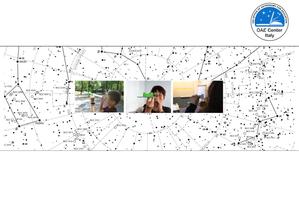Glossary term: Angular Diameter
Description: The angular diameter of an object is its visible diameter from a specific location measured as an angle. The angular diameter is used in astronomy as one way to express the size of celestial objects on the sky. The angular diameter increases with increasing physical size of an object and decreases when an object is farther away. For example, the Moon and Sun both have angular diameters of about half a degree when viewed from Earth. The Moon is about 400 times smaller than the Sun but appears the same size (about half a degree across), as the Sun is about 400 times further away.
See this term in other languagesTerm and definition status: This term and its definition have been approved by a research astronomer and a teacher
The OAE Multilingual Glossary is a project of the IAU Office of Astronomy for Education (OAE) in collaboration with the IAU Office of Astronomy Outreach (OAO). The terms and definitions were chosen, written and reviewed by a collective effort from the OAE, the OAE Centers and Nodes, the OAE National Astronomy Education Coordinators (NAECs) and other volunteers. You can find a full list of credits here. All glossary terms and their definitions are released under a Creative Commons CC BY-4.0 license and should be credited to "IAU OAE".
If you notice a factual error in this glossary definition then please get in touch.
Related Activities
The sky at your fingertips
astroEDU educational activity (links to astroEDU website) Description: Build a simple cross-staff and measure the stars!
License: CC-BY-4.0 Creative Commons Attribution 4.0 International (CC BY 4.0) icons
Age Ranges:
10-12
, 12-14
Education Level:
Middle School
, Primary
Areas of Learning:
Informal/Field Trip Related
, Observation based
, Project-based learning
Costs:
Low Cost
Duration:
2 hours
Skills:
Analysing and interpreting data
, Developing and using models









